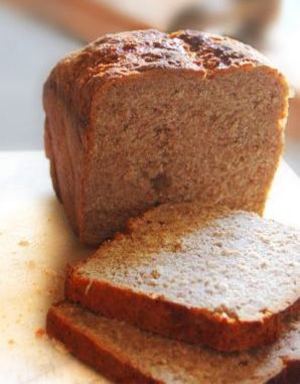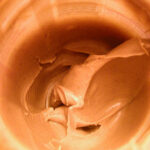Bread Baking 101 for Desert Dwellers
If you have had terrible luck with baking your own bread, I sympathize. The first five loaves I baked I actually dumped in the garbage. Over the years, I have discovered the unique requirements of desert baking, especially when it comes to bread. If you follow the tips in this article, you will find that your bread is not only edible, but good!
Rule Number One: Water
The most important rule to remember when baking bread in desert climates is that you will need much more water than what is called for in the recipe. When I first started baking, I faithfully followed recipes and couldn’t figure out what I did wrong. The truth is, flour is not just flour, it is a combination of flour and moisture from the air. In other climates, flour may contain up to 50% moisture. Here in the desert, it has virtually none. Most recipes are not geared to desert dwellers and do not compensate for this fact. Therefore, you must compensate. When a recipe calls for one cup of water, assume that you will need at least a cup and a half.
Don’t fear the dough becoming too wet. Even if it is a soggy, goopy mess, that is far better than a dough that is too dry. Err on the side of wetness; the moisture content will reduce once you knead it with floured hands on a floured board.
Rule Number Two: Kneading
Don’t skimp on the kneading. I suggest that during the first few loaves, you knead by hand rather than by dough hook. The reason for this is because you cannot feel whether the dough is adequately moist if you do not sense it with your own hands. This is a valuable thing to know . . . once you get the feel for the dough, you will be much more likely to know exactly how much extra water to add for your climate. Once you have that knowledge, you may use the dough hook successfully.
I always knead for at least 10 minutes and usually 12 or 13. Think of it as exercise; you are burning calories if you stand at a counter and knead briskly. Start with a very wet dough and a well-floured wooden cutting board or dough board. (If you have one of those wooden cutting boards with a well on the side for liquid, flip the board over and use the flat side for your dough.) Turn the dough onto the floured board, flour your hands very well and start kneading. If you need some flour on the top of the dough, do so, but don’t add more than you need. Remember to keep the dough moving. If you stop kneading for even a few seconds, it will stick and you’ll have a hard time getting it off the board. Keep moving the dough and don’t go anywhere during that 10 minutes.
The best dough will slightly stick to your hands. When you push the dough away from you and then pull up your hands, the dough will stick for a moment or two to your fingers, but should release as you pull away. If, on the other hand, you have an inch of dough stuck to every finger, then add extra flour. If the dough does not stick to your fingers even for a moment, and stays on the board when you take your hand away, then you know that the dough is not wet enough. Add more.
After about 8 or 9 minutes, the dough will start to feel stretchy, like pizza dough. You’ll notice that there are no more cracks in the dough. Once it gets to this stage, you only need a few more minutes of kneading.
Rule Number Three: Salt
Use about a 1-2 parts ratio of salt and yeast. In other words, if the recipe calls for 4 teaspoons of yeast, you’ll need close to 2 teaspoons of salt. I’ve met some bakers who cut out the salt or use only half a teaspoon, in order to increase rising. This is a mistake, especially in the desert. While it is true that salt retards yeast, it also makes for a much better loaf. Without it, your loaf is likely to be hard and dry.
Rule Number Four: Yeast
Don’t skimp on the yeast. For an average sized loaf, I use about two generously rounded teaspoons of Instant Yeast. I like instant dry yeast because it is cheap and I can buy it in bulk. Since I bake bread every day and have not actually purchased a loaf in years, I need the most economical brand. However, if you prefer another kind, use it according to its package directions.
Another tip that I would like to share with desert dwellers; buy yeast in the winter or early spring and store in your fridge or freezer for use the year round. Never buy yeast in summer or early fall; it may have been shipped in hot trucks and may make for a very poor rise. Check the expiration date and make sure that it is fresh (freezing it preserves freshness.)
Rule Number Five: Rising
Some new bakers avoid punching down the dough after the first rise. They think that they’ve got such a good rise, they want to keep it. The second rising, however, is critical. It fluffs up the loaf and keeps it from becoming rock hard. It also makes for a better texture.
After you have kneaded the dough, put it in a large, lightly-oiled bowl (I prepare the bowl ahead of time, so I don’t get my oil bottle sticky.) Make sure you turn the dough in the bowl so that both sides get a slight coating from the oil. Cover your bowl with cheesecloth or a towel and place on the oven rack inside your cold oven. Turn on the oven light; this will act as a gentle heat source, but make sure your bowl is not touching the bulb. Close the oven door and set the timer for 60 minutes.
After your dough has risen, check to see if it is doubled in bulk. Remember that a bowl is usually wider at the top than at the bottom, so the dough will not be twice as high even if it is doubled. If your room is very cold, it may need more than an hour; if very warm, it may need less time.
If your dough is sufficiently risen, then turn it onto a lightly floured board, press it down gently (I don’t use the “punch down” method; I use a gentle press but I get the dough back to nearly the size it was before it rose.) Once you have pressed it down, shape it into a loaf, being careful to smooth the top and avoid creases. Place the loaf in a loaf pan and let rise again on the stove top, while the oven is pre-heating.
I put a thick towel on top of my stove, put the loaf pan on top of the towel, and then place a bowl or something large over the pan, so that it won’t have any drafts preventing the rise. Make sure that whatever you put over the pan will not stick to the rising loaf. The heat from the oven wafts through the thick towel and slightly warms the top of the stove; this in turn helps the loaf sitting on the stove to rise. Whatever you do, don’t put the loaf directly on the stove top without a towel; it might get too warm and kill the yeast. Yeast can’t take any heat above 115 degrees.
Rule Number Six: Preparing the Oven and Baking
The oven temperature and moisture content are very important for baking a pliant, soft loaf. Prepare the oven by placing a shallow pan of water (about 2 or 3″ high and at least 12″ long) on the lowest oven rack. Put enough water into this pan so that there will still be at least a small amount left after you finish baking your loaf. Place the upper oven rack as low as you can in the oven, allowing an inch or two of clearance for the pan of water. On this upper rack, place a baking stone or pizza stone. If you don’t have one, any cast iron fry pan or dutch oven (without the lid) will do, as long as it is big enough to fit the loaf. Once you have these things in the oven, heat it to 400 degrees for at least 30 minutes before putting in your loaf. (I usually make it 45, because my loaf usually takes about 45 minutes to double during the second rise.
Once your loaf is sufficiently risen a second time, place it very carefully on the pizza stone or in the cast iron pan in the oven. Do not jar the loaf, and don’t accidentally hit the top of it or it will deflate (been there, done that.) You’ll notice when you are putting in the loaf that the oven is slightly moist, from the water in the pan. This is good. Close the oven door, then lower the temperature from 400 to 375 and bake your loaf. Depending upon the size of your loaf, you’ll probably leave it in about 45 minutes. Do not make loud or jarring noises during the first 5 minutes of baking; like a cake, it may deflate.
When the loaf is done baking, take it out of the pan and wrap it in cheesecloth or a towel for about a half hour before trying to eat it. This will help to set the moisture content of the loaf, which is so important in the desert. Afterward, you can unwrap it and place it in a plastic bread bag. Wait until the loaf is cool before slicing it (or if you can’t wait, just slice a big hunk right away. It won’t slice as nice, but it will taste great!)
One of my favorite loaves is one of the simplest. Beginning bakers in the desert will find this loaf pretty darned good for a first try:
Basic White Bread
(Recipe already adapted for desert dwellers. If you live in a humid climate, you will have to lower the water content.)
3 cups of flour, sifted (do not use all bread flour; use either all purpose or a combo of half bread flour and half AP)
2 heaping teaspoons of instant dry yeast
1 teaspoon of salt
2 tablespoons of honey
1 3/4 cups of water (be prepared to add more, if necessary.)
Warm the water and honey slightly (to about 90 degrees.) Be certain that it is not too hot or you will kill the yeast.
Mix all the dry ingredients together (no need to “proof” Instant Yeast, but if you use another kind you may proof it first.) I mix the yeast with the flour thoroughly before I add the salt.)
Mix the honey and water together and stir to blend; dump the liquid into the dry mixture. Blend until it forms a very soft ball (or a goopy mess; that’s okay too. 🙂 If it looks dry it probably is; add more water. If you can see water droplets, it might be too wet. If not, it’s fine.
Dump the mixture onto a floured board and knead for 10-12 minutes. Add flour as needed to keep the dough from coating your fingers. Also, add more flour to the kneading board if necessary. Follow rules on kneading, above. You are looking for a soft, pliable dough, so take care not to add any more flour than necessary.
After you have kneaded for the full length of time, form the dough into a ball and drop into an oiled bowl, turning it over to coat all sides. Cover with a towel and place in the cold oven to rise. (Or in another draft-free place, if you prefer.)
After an hour of rising, punch or press down the dough and shape into a loaf. Place in loaf pan. Let rise for another 45 minutes to an hour. Meanwhile, prepare the oven according to the instructions above. Set the temperature to 400 degrees.
When the loaf has doubled again after the second rise, place the pan into the oven on a bread stone or in a cast iron pot. Turn down oven to 375 and bake for 45 minutes. When it’s done, take it out of the oven and wrap it in a towel for 30 minutes. Enjoy.






